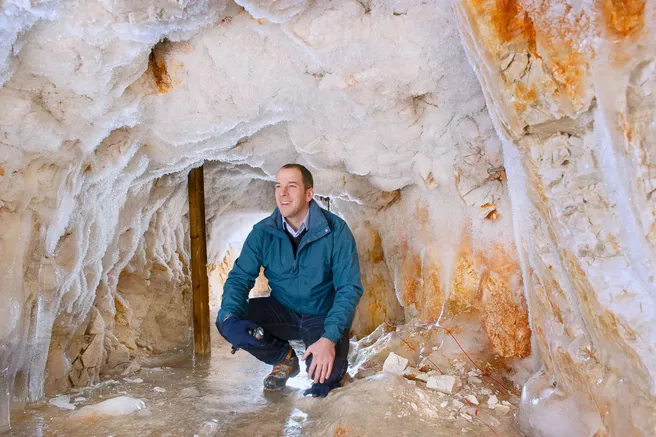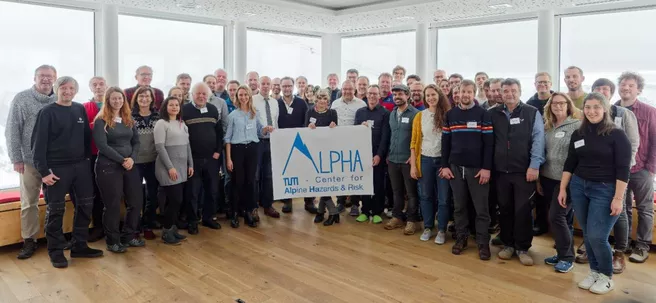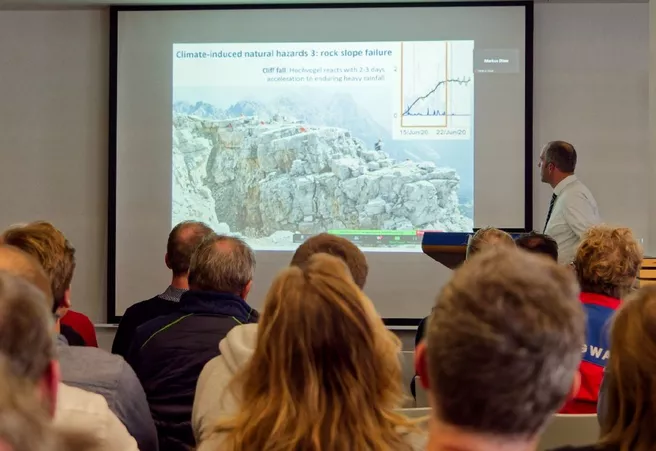Sixty meters below the summit, geologist and geographer Prof. Michael Krautblatter investigates Germany's highest mountain. Once a month, he and his team measure the temperature of the thawing permafrost inside the Zugspitze. In the 800-meter-deep ridge tunnel, 140 electrodes have been recording how the inner cement of the rock melts for over eight hours - since the mid-1980s. "In ten to 15 years, everything will be gone at this altitude, and in 40 to 50 years, the permafrost on the Zugspitze will have disappeared completely," states Krautblatter.
Besides permafrost systems, scientists from various disciplines at TUM are also researching slope movements, rockfalls, and mudslides. Cracks in the rock are measured by fissurometers, laser scanners record point clouds and surface models using 3D geodata, and tachymeters analyze rock formations to determine the fall speeds and inclination angles of potentially collapsing rocks. Using state-of-the-art geodetic measurement technology, researchers are helping to develop an early warning system, such as on the Hochvogel in the Allgäu. With a web-based app for 3D visualization, a digital twin of the Alpine region is created by photogrammetric digitization of aerial images. Hotspots, change analyses, real-time monitoring data, and annual comparisons are available for the test areas.
TUM ALPHA was launched at the Schneefernerhaus environmental research station with representatives from the Alpine countries of Austria, Switzerland, Italy, France, and Slovenia. Afterwards, more than 60 participants networked at the AlpSenseRely project's stakeholder meeting for alpine natural hazards in climate change and discussed future research and action requirements. Participants included Scientists from TUM and other research institutions, geologists from Bavaria, Tyrol, Salzburg, and South Tyrol, as well as representatives of the Bavarian Ministry of the Environment and the StMB, the German Alpine Association, the Bavarian Mountain Rescue Service, from affected communities, cable cars and mountain huts. The objectives are to interact with stakeholders from industry, politics, NGOs, and international partner organizations to enable cooperative research with partners from all Alpine countries.
Contributing professorships at TUM:
TUM School of Engineering and Design
- Chair of Soil Mechanics and Foundation Engineering, Rock Mechanics and Tunneling
- Chair of Landslide Research (Project Lead)
- Chair of Hydrology and River Basin Management
- Chair of Engineering Geodesy
- Chair of Engineering Geology
- Professorship of Photogrammetry and Remote Sensing
- Professorship for Engineering Risk and Reliability
- Chair of Urban Water Systems Engineering


